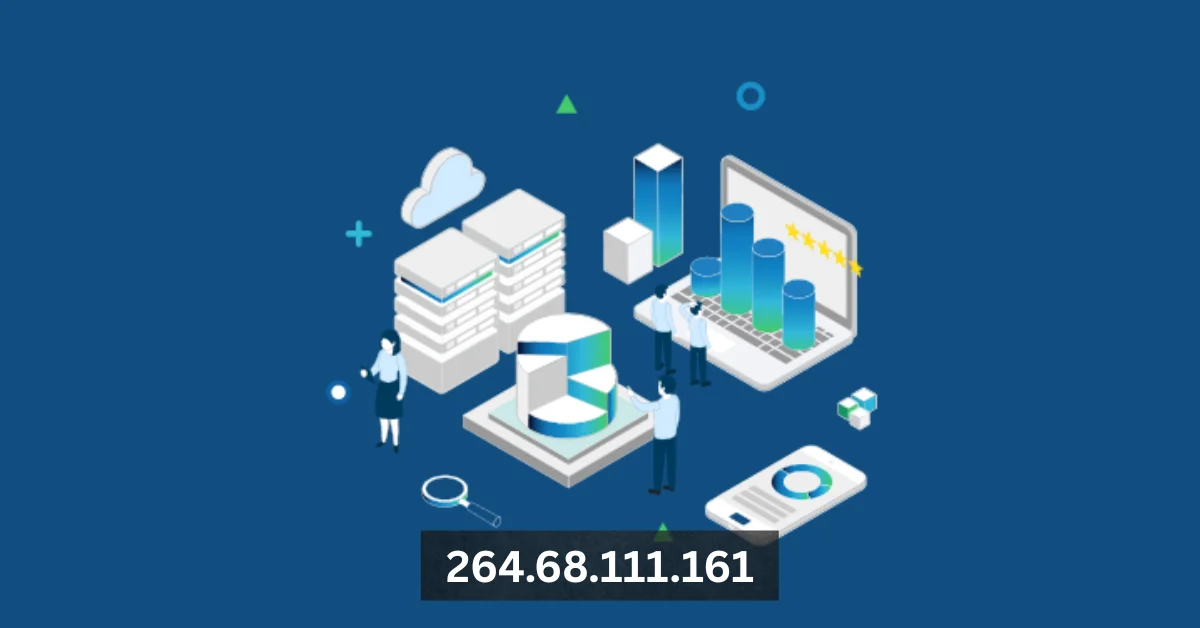Understanding 264.68.111.161: Full Guide to Meaning, Validity, Risks, and IP Lookup
IP addresses are the backbone of online communication, allowing devices to identify and connect with each other across networks and the internet. Every computer, smartphone, server, and smart device relies on an IP address to send and receive data. Among the many IPs searched online, 264.68.111.161 frequently sparks curiosity—mainly because it looks like a standard IPv4 address but doesn’t behave like one.
This guide breaks down everything you need to know about 264.68.111.161, including why it is invalid, how IP ranges work, why such addresses appear in logs, and how they relate to cybersecurity and network protection.
What is 264.68.111.161?
At first glance, 264.68.111.161 follows the standard IPv4 pattern of four number sets separated by dots. However, a valid IPv4 address must fall within the range of 0.0.0.0 to 255.255.255.255.
Because the first section in this IP is 264, the address is invalid and cannot exist on the internet or in a local network.
Key Points to Know
- IPv4 allows only numbers from 0 to 255 in each octet
- Any address beyond that range is non-functional and non-routable
- This IP may appear due to a typo, corrupted logs, software bugs, or spoofing attempts
IPv4 vs. IPv6: Why This Address Doesn’t Fit
To understand why 264.68.111.161 is invalid, it helps to understand the two major IP standards:
IPv4 – The Original Standard
- Created in the early stages of the internet
- Uses a 32-bit system
- Provides around 4.3 billion unique addresses
- Example format: 192.168.0.5
IPv4 exhaustion is one reason invalid or fake IPs often surface.
IPv6 – The Modern Replacement
- Uses a 128-bit system
- Supports 340 undecillion+ possible addresses (virtually unlimited)
- Uses a mix of letters and numbers
- Example format: 2400:cb00:2048:1::c629:d7a2
Since 264.68.111.161 doesn’t match IPv6 formatting and exceeds IPv4 ranges, it is invalid under both systems.
Why Do Invalid IP Addresses Like 264.68.111.161 Appear?
Even though this IP doesn’t technically exist, it may still show up. Reasons include:
1. Typographical Errors
Someone may accidentally enter 264 instead of 164 or 24, causing invalid IP output.
2. Test or Placeholder Data
Developers often generate random numbers as dummy IPs during testing.
3. Misconfigured Systems
Faulty network devices, DNS issues, or router bugs can produce invalid address logs.
4. Cybersecurity Obfuscation
Hackers sometimes use fake IPs when attempting to bypass monitoring or confuse analysts.
Security & Cyber Risks Associated with Invalid IPs
Even though 264.68.111.161 itself cannot harm systems, seeing such entries repeatedly may indicate underlying issues.
Potential Cybersecurity Red Flags
- Spoofed traffic attempting to mask origin
- Logs modified to hide malicious access
- Bots or attack scripts generating fake IP data
- Port-scanning or probing attempts
Why Security Tools Flag Such IPs
Firewalls, SIEM tools, and IDS/IPS platforms may mark invalid IPs as suspicious because they do not map to legitimate hosts. Monitoring anomalies like these helps detect bot attacks and intrusion attempts.
How IP Lookup Works (and Why It Won’t Work for 264.68.111.161)
An IP lookup provides information such as:
- Country, state, and city
- ISP (Internet Service Provider)
- Hosting or data center
- Domain or organization using the IP
However, since 264.68.111.161 is invalid, lookups will return no results.
For valid IPs, lookup tools are used for:
- Diagnosing network issues
- Blocking spam or malicious traffic
- Website geo-targeting
- Cyber investigations
Understanding Reserved & Special IP Ranges
To place this invalid IP into context, here are key IP groups used globally:
| IP Range Type | Example Range | Usage |
| Private IP | 192.168.0.0 – 192.168.255.255 | Used inside home or office networks |
| Loopback | 127.0.0.1 | Sends traffic back to the device itself |
| Broadcast | 255.255.255.255 | Sends a message to all devices in a network |
| APIPA | 169.254.0.0 – 169.254.255.255 | Auto-assigned when DHCP fails |
264.68.111.161 does not belong to any official or recognized IP class.
What It Means If You See 264.68.111.161 in Your Logs
Seeing this invalid IP once is usually harmless. Seeing it repeatedly, however, can signal issues worth investigating.
Possible Causes
- Network device configuration errors
- Faulty software producing invalid data
- Suspicious incoming requests using spoofed IPs
- Malware or bot activity masking origins
Continuous monitoring is essential to identify whether the pattern suggests a benign glitch or emerging cyber threat.
Best Practices for Handling Invalid or Suspicious IP Addresses
To protect networks and systems, IT teams should take proactive steps:
Recommended Security Measures
- Enable firewall filtering for non-routable IP traffic
- Regularly audit server and access logs
- Train IT teams to recognize valid vs invalid IP structures
- Use reputable threat-intelligence software
- Update routers and IDS rules to detect spoof attempts
Long-Term Solution: Move Toward IPv6
Adopting IPv6 reduces reliance on outdated systems and decreases invalid IP conflicts.
Conclusion
Although 264.68.111.161 resembles a standard internet address, it is not valid based on IPv4 rules. It cannot be assigned, traced, or routed to any real device. Its appearance typically points to error, test data, or disguised traffic rather than a legitimate IP source.
Understanding such anomalies helps individuals and IT professionals strengthen cybersecurity awareness, prevent misconfigurations, and keep networks healthy. Monitoring and addressing invalid IP entries is a proactive step toward safer digital interactions.
FAQs
1. Is 264.68.111.161 a valid IP address?
No. The first octet exceeds the IPv4 limit of 255, making it invalid.
2. Can 264.68.111.161 be traced or located?
No. Invalid IPs cannot be traced to a device, location, or ISP.
3. Why do invalid IPs show up in logs?
They may appear due to typing mistakes, faulty systems, placeholder data, or IP spoofing by attackers.
4. Should I worry if this IP appears on my network?
One occurrence is usually harmless, but repeated logs could suggest misconfiguration or malicious probing attempts.
5. What should I do if I see invalid IPs frequently?
Review firewall rules, scan for malware, check device settings, and monitor logs to filter or block suspicious traffic.






